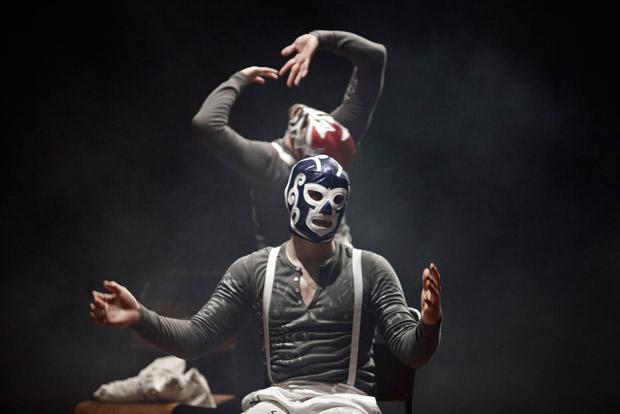
© Pedro Machado. (Click image for larger version)
Candoco Dance Company
Miniatures, Two for C, Notturnino
London, Laban Theatre
28 February 2014
www.candoco.co.uk
Candoco completely embodies the essence of diversity in the human condition. I love the emphasis of its strapline being “The Company of Disabled and Non-Disabled Dancers”. A magnificent seven of them combine to present this triple bill, which grows from a weird and wonderful solo, through a combative duet to the full septet in playful mode. Watching them perform, one is left wondering what defines “able” and “disabled” because while it is clear that one uses a wheelchair, another is missing a leg and a third, a hand, it is also evident that these body conditions are not disadvantages when it comes to the capacity for dance and performance. With the exception of visually accommodating the wheelchair and crutch – both only sporadically used in the final piece – one quickly discounts any notion of disability when watching these charismatic performers.
The programme opens with Miniatures, a vivid and thought-provoking work by Lea Anderson, which I believe to be the first solo she has ever made. The concept came to her when at the V&A’s miniature portrait gallery and it concerns what is not seen outside the boundary of the frame. This is a case where the work and the performer are a perfect match, since Annie Hanauer fits the whole concept so marvellously. She is a sexy, futuristic vision of Queen Elizabeth I, wearing huge, glittery platform shoes, a body-hugging long beige dress, a barely-green extra-short bolero, ruched pink scarf (in the manner of a modern ruff) and wild orange hair, pushed high up her scalp by a flesh-coloured band. Hanauer stands in front of a framed deep blue screen and stares into a camera, while performing arm, head and upper body movements, each group of actions representing a separate portrait, her face shown in real-time on another screen to the front and left of the dancer’s position. It is visually stunning, utilising a wonderful palette of colour blocks, dominated by the blue screens and the fiery, orange wig but it is the emphasis of Hanauer’s wide-open eyes that arrests the audience, all of us locked-in by her unwavering gaze.

© Hugo Glendinning. (Click image for larger version)
The work is thoroughly enriched by Simon Vincenzi’s colourful costume and Steve Blake’s music, which manages to be both surprisingly modern and evocatively Elizabethan, but it is Hanauer’s ability to keep us transfixed with the minimum of movement that is the crowning achievement. It feels as if we are walking through a gallery of miniature portraits but one fast-forwarded into the future where the viewers can go through each frame to see the subject moving as she is painted. This is an innovative work, superbly animated by Hanauer, which creates indelible pictures in the memory.
The strength of this visual spectacle follows through into Javier De Frutos’ Two for C, a duet that fills in the prequel to his Studies for C (shown by this company here at Laban in 2012). Both works are inspired by Tennessee Williams’s play Camino Real, which concerns a couple trapped inside a long-term relationship. Williams was also the source for Elysian Fields, the work based on A Streetcar Named Desire that de Frutos made for Rambert in 2011.

© Pedro Machado. (Click image for larger version)
This prolific choreographer often returns to similar themes and imagery. The idea of human conflict, played out in a square or “a ring”, or through the characters of male combatants (such as matadors or wrestlers) is recurring symbolism. In this male duet, Kostas Papamatthaiakis and Rick Rodgers (a cheerleading champion and acrobat who only took up dancing in 2012), wear Mexican wrestling masks and white suits (covered in writing) with the carpet of their “living room” indicating both an intimate domestic setting and a wrestling ring. The power play of the relationship and wrestling analogy is effectively portrayed with the challenge of capturing a white jacket becoming the dénouement that leads one player to crawl away and the “victor” to remain behind. The power of this final imagery shows that winning in such domestic circumstances also inevitably leads to loss. It is another addition to an unbroken line of successes from de Frutos who is managing to create work on a wide range of companies around the world with no let-up in the high quality of his output.
Thomas Hauert’s Notturino matched these first two works for concept, if not delivery. I loved the idea of basing the work on Tosca’s Kiss, a 1984 documentary film about elderly opera singers living out the twilight of their lives in the Casa di Riposo per Musicisti in Milan, a retirement home for musicians founded by Verdi in the late nineteenth century.
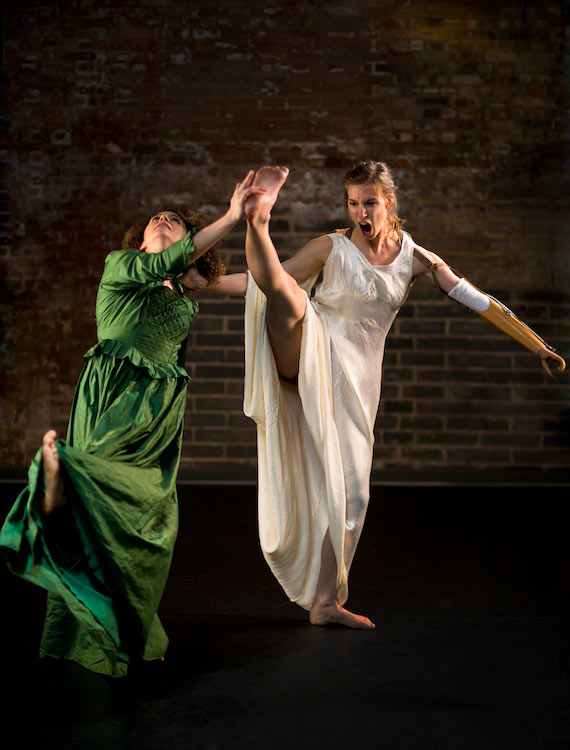
© Benedict Johnson. (Click image for larger version)
Hauert uses extracts of the film’s soundtrack – crucially with the sub-titles divorced from the accompanying visual imagery – as the backdrop to the structured improvisation of his dance. This aural vista provides the everyday sounds of a rest home (enquiries at the reception, cups tinkling etc) with the Italian dialogue of these singers reliving their heyday, including a cappella reminiscences of the operas in which they performed and memories of the great stars with whom they once associated. They may have only touched the coat-tails of Maria Callas’ meteoric career but they enjoyed much longer lives. A part of the work’s poignancy comes in the knowledge that none of these unseen stars are likely to remain alive today.
Hauert’s work succeeded in making me want to see Daniel Schmid’s film but its appeal largely ended there. I failed to achieve any appreciation of how the movement on stage related to the soundtrack and although the former included some memorable moments in the group’s playfulness, it didn’t trigger associations with the spoken and sung text, either in a literal or abstract sense. I left the theatre wondering what connections I had missed.
Despite my inability to “get” the live improvisational aspects of this final piece, just absorbing the soundtrack was worthwhile, emphasising that these three works were all rich in concept and a treat for the eyes and ears; and I left Laban full of admiration for the energy and ebullience of this well-knit ensemble.












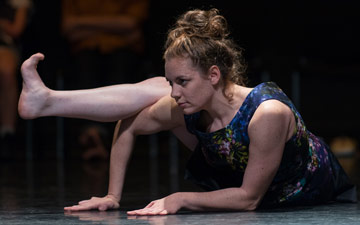
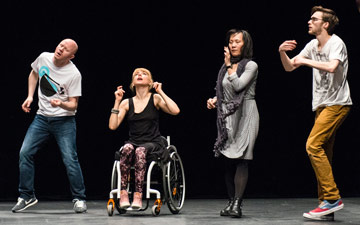

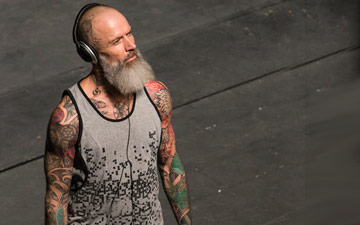

You must be logged in to post a comment.